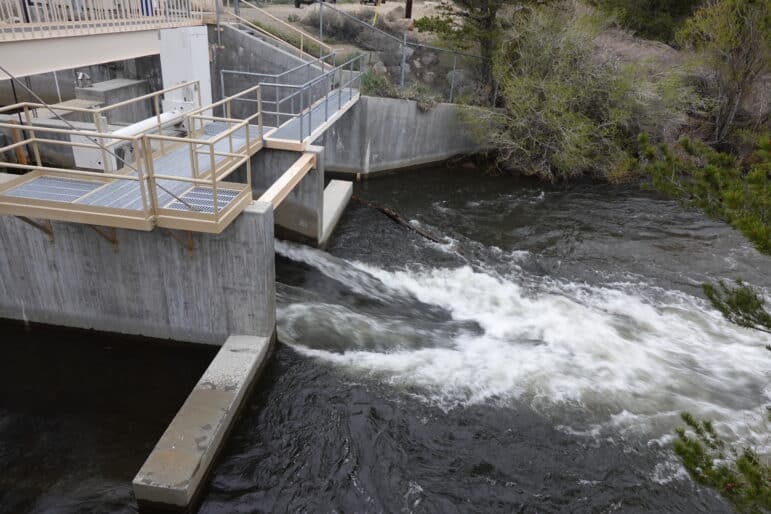
Warm days are rapidly melting high country snow and increasing the flow of water in Mono Lake’s tributaries. As of this week, Lee Vining Creek is flowing in full force past the Los Angeles Department of Water & Power (DWP) diversion dam. All water arriving at the diversion facility continues through the dam and on downstream because DWP shut down its water diversions on Sunday, as required in the science-based Stream Ecosystem Flow requirements that the Mono Lake Committee and partners worked for more than a decade to establish.
The high flows build healthy stream systems and are essential to the stream restoration program that is designed to heal the damage caused by decades of excessive and damaging DWP water diversions.
High flows don’t happen every year, but when they do they provide the dynamic energy and water volumes to shape stream channels, scour pools for fish habitat, and move sediment and seeds through the riparian forest and across the floodplain. The State Water Board’s rules halt stream diversions at flows of 250 cubic feet per second and higher to maximize these high flow benefits. Today the flow is up to 330 cubic feet per second and we expect that to increase as the large snowpack melts.

Top photo by Geoff McQuilkin.
